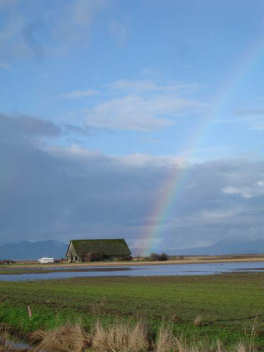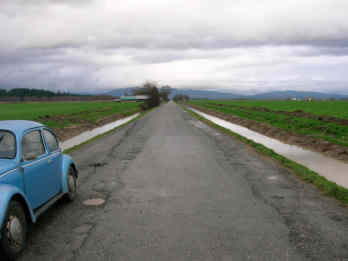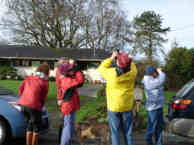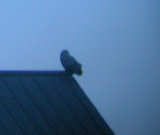 |
Seattle, Wed., Jan. 11, 2006
Skagit Valley. Samish Island. Padilla Bay.
Unless you've spent time in Washington State, you've probably never heard of them.
They're names that can make a birder's eyes begin to twitch
They're places where lots of birds of the Boreal spend the winter.
That's not where I was on Tuesday. About the only clues to my whereabouts on Tuesday were the gray, rainy skies and Glaucous-winged Gulls we could see soaring over downtown Seattle from the window of our meeting room. That's not to imply that things were boring. They were not.
To be in a room with six people passionate about protecting the future of one of the last unspoiled ecosystems left on earth is not boring. A little daunting sometimes but a universe away from boring.
Today we had a different mission. We had something to prove.
Marilyn had told me that there were doubters -- Seattle-area birder friends who had said that the Pacific Northwest just didn't have many Boreal birds in winter. Today was our chance to put the question to the test.
How many birds of the Boreal could we see in a day of birding Washington's Skagit Valley?
That was how Genevieve, Lane, Marilyn, Scott, Emily, and I found ourselves up before dawn driving north on Route 5 out of Seattle on a Wednesday in January.
 |
About an hour�s drive north of Seattle, the Skagit Valley is flooded with birds. It�s a land of dikes and ditches constructed to open miles and miles of rich soils to farming. Twenty-four consecutive days of rain had left pools of water in every field. And just about every field was filled with hundreds, sometimes thousands, of Mallards, Northern Pintail, American Wigeon, and Green-winged Teal. Hundreds of swans�both Trumpeters and Tundras�stood among the ducks like giant white statues. There were Bald Eagles by the dozens in virtually every direction, some so tame that they perched 30 feet over our heads while we stared into their glaring eyes. Northern Harriers, their white rumps gleaming, floated low over field after field�we probably saw at least 30-40 before the day was over. Short-eared Owls glided with them at several sites. Scott had to see one in the telescope before he could believe that it was really an owl not another hawk.
At Samish Island, Lane enjoyed the Pacific Loons and Surf Scoters. Genevieve was wowed by flocks of Bufflehead and Common Goldeneye. Marilyn spotted a pair of Harlequin Ducks. Emily was enthralled with a flock of five thousand Dunlin that swirled and flashed back and forth across the horizon.
 |
We stopped at brushy areas where pishing brought in Golden-crowned Sparrows, Fox Sparrows, Ruby-crowned and Golden-crowned Kinglets, and loads of Dark-eyed �Oregon� Juncos. A Northern Shrike popped up in one spot on the way to Samish Island.
The finale was an incredible blizzard of Snow Geese, thousands of birds, that twisted in a white shimmering cloud. And then, just before dark, a Snowy Owl on a barn peering intently at us with those big yellow eyes. Then a second one a little further out in the field.
 |
We saw lots of birds--tens of thousands of individuals and 65 species.
How many of those would you guess were birds of the Boreal?
I had thrown out a little bet to my birding comrades as to their answers to that question. A new bird book was riding on the best guess.
It was Lane who won--and even she underestimated.
The answer?
62 of the 65 species (95%) we saw were birds of the Boreal!
30 (46%) of those were species in which at least 25% of their total population relies on the Boreal for breeding.
20 had at least 50% of their breeding population in the Boreal.
Some, like the Northern Shrike, Surf Scoter, and Bufflehead have 80% or more of their breeding population in the Boreal.
Where do your winter birds come from?

